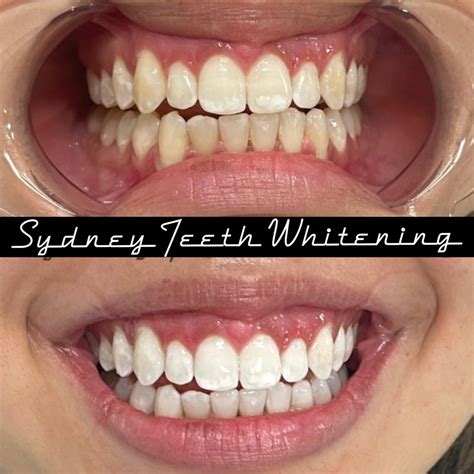Spots On Teeth After Whitening

The pursuit of a dazzling smile often leads individuals to teeth whitening treatments, hoping to erase years of staining and discoloration. However, for some, the excitement of revealing a brighter smile can be short-lived, as they notice unwelcome spots on their teeth after the whitening process. These spots can range from small, barely noticeable dots to more pronounced patches, leaving many to wonder what causes them and, more importantly, how to get rid of them.
Understanding the nature of these spots is crucial for addressing them effectively. They can appear as white, brown, or even transparent patches, depending on their cause. One common reason for the appearance of spots after teeth whitening is the uneven distribution of the whitening agent. This can happen due to several factors, including the shape of the teeth, the presence of fillings or crowns, and the type of whitening product used. For instance, tray-based whitening systems or strips might not perfectly align with the contours of every tooth, potentially leading to areas that are less exposed to the whitening agent.
Another significant factor is the tooth’s enamel itself. Teeth are made up of enamel, dentin, and pulp. The enamel, the outermost layer, is semi-translucent and can have natural variations in density and texture, which might become more noticeable after whitening. Some areas of the enamel might be more resistant to the whitening gel, resulting in spots or patches that appear as different shades from the rest of the tooth.
Dental fluorosis, a condition caused by excessive fluoride exposure during tooth development, can also lead to spots on teeth. While fluorosis itself does not change after whitening, the contrast between the fluorosis spots and the surrounding whitened areas might make these spots more noticeable.
Furthermore, teeth whitening can sometimes exacerbate existing conditions such as enamel erosion or decay, making spots or areas of discoloration more apparent. For example, if the teeth have minor decay or cracks, the whitening process might highlight these defects by penetrating deeper into the tooth structure in those areas.
To address spots on teeth after whitening, several strategies can be employed, depending on the underlying cause. For minor, superficial spots resulting from uneven whitening, a follow-up whitening session or the use of a desensitizing toothpaste might help in achieving a more uniform color. However, for spots caused by more intrinsic factors like fluorosis, decay, or structural anomalies, professional dental intervention might be necessary.
Dentists can offer a variety of treatments to camouflage or correct spots, including dental bonding, veneers, or crowns. Dental bonding involves applying a tooth-colored resin to the affected area, which is then shaped and polished to match the surrounding tooth structure. Veneers, thin layers of porcelain or composite material, are custom-made to cover the front of the teeth, effectively masking spots and stains. In more severe cases, where the tooth structure is significantly compromised, a crown might be recommended to fully encase the tooth, restoring both its appearance and function.
Prevention is also a key component in managing the appearance of spots after teeth whitening. Maintaining good oral hygiene, including regular brushing, flossing, and dental check-ups, can help in identifying and addressing potential issues early on. Additionally, being aware of the potential risks and benefits associated with teeth whitening, as well as discussing individual expectations and concerns with a dentist beforehand, can ensure that the process is undertaken with a clear understanding of the possible outcomes.
In conclusion, while spots on teeth after whitening can be disappointing, understanding their causes and exploring the available treatment options can help in achieving the desired smile. Whether through simple adjustments to oral care routines, additional whitening treatments, or more extensive dental work, the goal of a uniformly bright and healthy-looking smile is within reach for many. As with any dental procedure, consulting with a professional is essential for determining the best course of action and ensuring that any treatment aligns with overall dental health and well-being.
What are the common causes of spots on teeth after whitening?
+Common causes include uneven distribution of the whitening agent, natural variations in tooth enamel, dental fluorosis, and pre-existing conditions such as enamel erosion or decay.
Can spots on teeth after whitening be treated?
+Yes, spots can often be treated. Depending on the cause, treatments may include follow-up whitening sessions, desensitizing toothpaste, dental bonding, veneers, or crowns. It's essential to consult a dentist to determine the most appropriate treatment.
How can I prevent spots on my teeth after whitening?
+Prevention involves maintaining good oral hygiene, regular dental check-ups, and being aware of the potential risks and benefits of teeth whitening. Discussing expectations and concerns with a dentist beforehand can also help in managing outcomes.
As the quest for the perfect smile continues, understanding the complexities of teeth whitening and its potential aftermath is crucial. By embracing knowledge and professional guidance, individuals can navigate the process with confidence, addressing any unexpected spots or issues that may arise along the way. The journey to a brighter, healthier smile is unique to each individual, and with the right approach, it can lead to a lifetime of confident, radiant smiles.